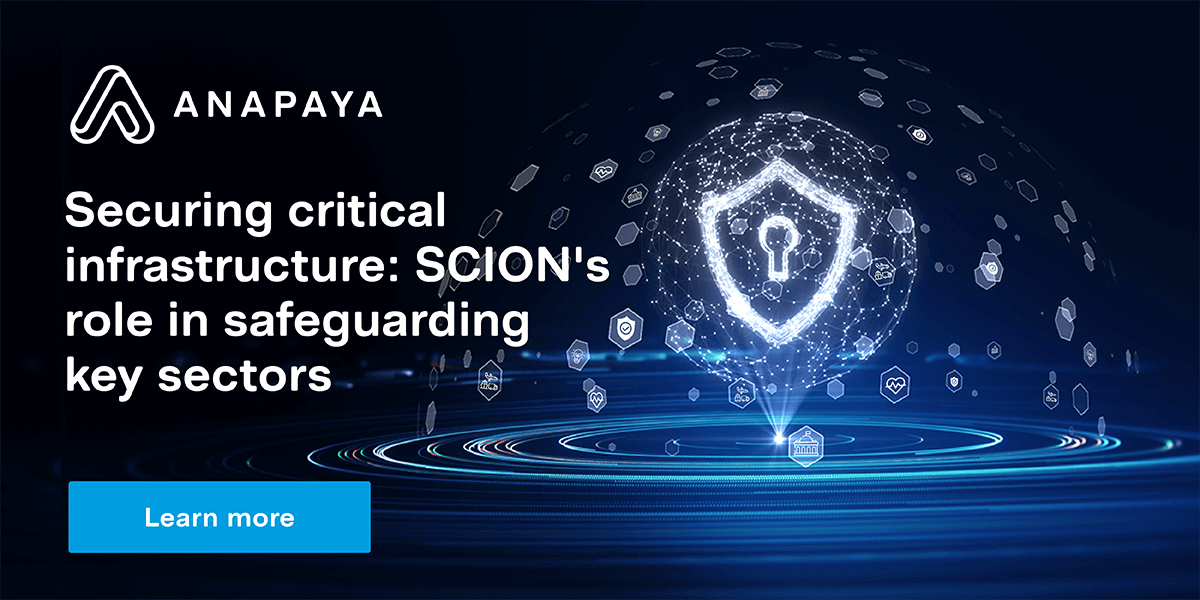In modern society, critical infrastructure plays an indispensable role in maintaining everyday life. Power grids keep our cities illuminated and our homes powered, financial institutions facilitate economic transactions, telecommunications networks enable seamless communication, and healthcare systems ensure the well-being of millions.
However, with the increasing reliance on interconnected technology, these vital sectors have become prime targets for malicious actors seeking to disrupt, damage, or gain unauthorized access to essential services.
The evolving threat landscape poses a significant challenge to infrastructure operators, who must ensure their networks are adequately protected from cyberattacks and other malicious activities. Cyberattacks are no longer just isolated incidents; they have become sophisticated, persistent, and capable of causing devastating consequences. As organizations face relentless attempts to breach their defenses, it is imperative to explore innovative solutions that can safeguard these key sectors effectively.
In this blog post, we will explore the role of SCION (Scalability, Control, and Isolation on Next-Generation Networks), a cutting-edge network architecture, in securing critical infrastructure and enabling organizations to protect their networks from cyberattacks. By the end of this article, we will demonstrate why SCION is essential in today's digital landscape and emphasize the importance of protecting critical infrastructure with this advanced network architecture.
Understanding the significance of critical infrastructure protection
Critical infrastructure encompasses the physical and virtual systems, assets, and networks vital to a nation's security, economy, and public health. Examples of critical infrastructure sectors include:
Power and energy: The power grid, electrical generation facilities, and energy distribution networks that deliver electricity to homes, businesses, and industries.
Finance: Financial institutions, banking systems, payment networks, and stock exchanges that facilitate economic transactions and monetary operations.
Telecommunications: Communication networks, data centers, and internet infrastructure that enable the exchange of information and connectivity between individuals and organizations.
Governments: Government facilities, administrative systems, and networks that enable the functioning of public institutions, governance, and public services.
Transportation: Transportation networks, airports, seaports, railways, highways, and public transit systems that facilitate the movement of goods and people within and between regions.
Healthcare: Hospitals, medical facilities, healthcare networks, and public health systems that provide essential medical services and support public well-being.
The interconnected nature of critical infrastructure means that disruptions in one sector can have far-reaching consequences across the entire economy. Some key economic impacts of disruptions include:
| Financial losses | Disruptions in financial institutions and payment systems lead to economic instability, loss of investor confidence, and increased vulnerability to financial fraud. |
| Productivity downtime | Power outages, telecommunication disruptions, and data center failures result in significant downtime for businesses, affecting productivity and revenue. |
| Supply chain disruptions | Interruptions in critical infrastructure sectors disrupt supply chains, leading to delays in the delivery of goods and services. |
| Loss of public services | Healthcare system disruptions affect patient care, public health response capabilities, and emergency services. |
Each of these sectors requires scalable, reliable, secure networks that can withstand potential cyber threats. Unfortunately, malicious actors have been exploiting the lack of adequate protection in many critical infrastructure systems, resulting in costly data breaches and network disruptions. Given the potential economic and social impacts of a critical infrastructure breach, organizations must invest in reliable solutions that can protect their networks effectively.
The growing threat landscape for critical infrastructure
The increasing sophistication of cyberattacks means existing security measures are no longer enough to protect critical infrastructure from malicious actors. In addition, the widespread adoption of internet-connected devices and applications has exposed organizations to numerous vulnerabilities.
Some of the cyber threats faced by critical infrastructure sectors include:
|
DDoS Attacks |
DDoS attacks are cyber attacks that flood a system or network with malicious traffic, preventing users from accessing legitimate services and disrupting operations. |
|
BGP Hijacking |
BGP (Border Gateway Protocol) hijacking involves the unauthorized manipulation of routing paths, redirecting network traffic to malicious destinations, or intercepting sensitive information. |
|
Data and Information Theft |
Cybercriminals may target critical infrastructure to steal valuable data and information, which can be exploited for financial gain or other malicious purposes. |
|
Man-in-the-Middle (MitM) Attacks |
MitM attacks involve intercepting and manipulating communications between two parties to gain access to confidential information. |
|
Misconfiguration |
Misconfigurations in network devices, systems, or security settings can create vulnerabilities that attackers can exploit to gain unauthorized access or disrupt critical infrastructure operations. |
|
Eavesdropping |
Eavesdropping refers to the unauthorized interception and monitoring of communications, allowing attackers to gain access to sensitive information transmitted over networks. |
Critical infrastructure systems face vulnerabilities to these attacks for various reasons, including legacy systems, interconnectedness, lack of security by design, and inadequate security measures. The proliferation of IoT devices, cloud computing, and the growing complexity of IT environments further compound these threats.
Given the growing threat landscape and the potential consequences of cyberattacks on critical infrastructure, organizations must prioritize advanced security measures to effectively protect their networks and assets.
These measures include continuous monitoring and analysis of emerging threats and vulnerabilities, deploying IDPS solutions that enable real-time detection and blocking of malicious activities, implementing robust access control mechanisms, such as multi-factor authentication and privileged access management, and encryption of sensitive data at rest and in transit. Additionally, organizations should invest in advanced security solutions, such as Anapaya’s SCION or GATE, to limit the exposure of their services.
SCION's role in securing critical infrastructure
Considering all the different ways the threat landscape evolved over the last few years alone, it becomes evident that traditional security measures are no longer enough to protect critical infrastructure from cyber threats.
This is where SCION (Scalability, Control, and Isolation on Next-Generation Networks) comes into play. SCION offers a revolutionary approach to network security, making it a game-changer in safeguarding key sectors.
Granular control and isolation
SCION’s architecture provides granular control and isolation features that are beneficial for securing network traffic and protecting critical infrastructure. SCION’s capabilities primarily focus on path control and segregation within a wide area network, rather than specifically addressing lateral movement across multiple locations or data centers.
Trustworthy path selection
One of SCION's most powerful features is its ability to enable trustworthy path selection. Unlike traditional networking protocols that route traffic based on the shortest paths, SCION takes a different approach. It selects paths based on security attributes and the reputation of intermediary nodes, ensuring that data travels through trusted and verified routes. This mitigates the risk of man-in-the-middle attacks and other malicious interception attempts that pose significant threats to critical infrastructure.
Scalability for future demands
As technology advances and demands on critical infrastructure increase, the network architecture must remain scalable. SCION's design ensures that it can adapt and expand alongside the growth of interconnected devices and applications. This scalability is vital for sectors such as finance, telecommunications, and healthcare, where networks must accommodate the ever-increasing volume of data and transactions without compromising on security.
Resilience against DDoS attacks
SCION provides inherent resilience against DDoS attacks thanks to its isolation mechanisms and the ability to reroute traffic away from targeted points. By diverting traffic through secure paths, SCION ensures that critical services remain operational even during high-intensity attacks.
Incorporating SCION into critical infrastructure
Incorporating SCION into critical infrastructure is not just a technical upgrade but a strategic decision to protect the networks and assets that form the foundation of our economy. With traditional networking protocols quickly becoming outdated, SCION offers a much-needed modernization of security protocols to ensure that key sectors remain safe and secure.
To incorporate SCION into critical infrastructure, organizations must first conduct a thorough security assessment of the existing infrastructure to identify vulnerabilities and understand the potential impact of a breach. This will help tailor the SCION implementation to address specific security needs.
Next, they need to develop a plan for incorporating SCION into the existing network infrastructure to ensure seamless integration.
Finally, by implementing SCION into the critical infrastructure network, they should conduct testing to identify any issues. By running simulated scenarios to assess the effectiveness of SCION in protecting against potential threats, organizations can gain confidence in their security protocols and be better prepared to face the challenges posed by cyber threats.
By embracing SCION, organizations demonstrate their commitment to prioritizing the security and resilience of critical infrastructure. This network architecture offers a robust defense against cyber threats, providing granular control, isolation, and trustworthy path selection. As they adopt SCION, they fortify their defenses, enhancing the protection of sensitive data, ensuring service continuity, and mitigating the potential economic and societal impacts of cyberattacks.
Does my organization need SCION?
The answer lies in how secure and reliable you want your infrastructure to be. SCION offers faster, more efficient, and highly secure Internet connectivity, making it an ideal solution for organizations handling sensitive data and critical infrastructure.
For sectors like finance, government, healthcare, and research institutions, where digital transactions are the lifeblood of operations, SCION's speed and security are indispensable. It ensures consistent and secure online financial activities, safeguarding critical data and protecting against data breaches, thus preserving the confidentiality of sensitive information.
Moreover, SCION's built-in security features and fault tolerance capabilities make it the ideal solution for mission-critical services. With greater control over traffic routing and custom-tailored network paths, organizations can meet specific compliance standards and secure connectivity to remote or mission-critical sites. Real-time control and monitoring further enhance security and efficiency, allowing seamless management of time-sensitive processes.
As we look towards the future, SCION's architecture will likely become even more integral to the success of not just the critical infrastructure but the entire digital ecosystem. Organizations must ensure that their security protocols accurately reflect the current technological landscape to stay ahead of emerging threats and remain competitive in the digital economy.
So, whether your organization is a financial institution, government entity, or a multinational business, incorporating Anapaya's SCION technology offers the best of both worlds: enhanced efficiency and reduced operational time without compromising on security or reliability. To explore the possibilities of SCION for your organization and understand how it can meet your specific needs, book a meeting with us today.





.png?width=380&name=Image%20(11).png)




